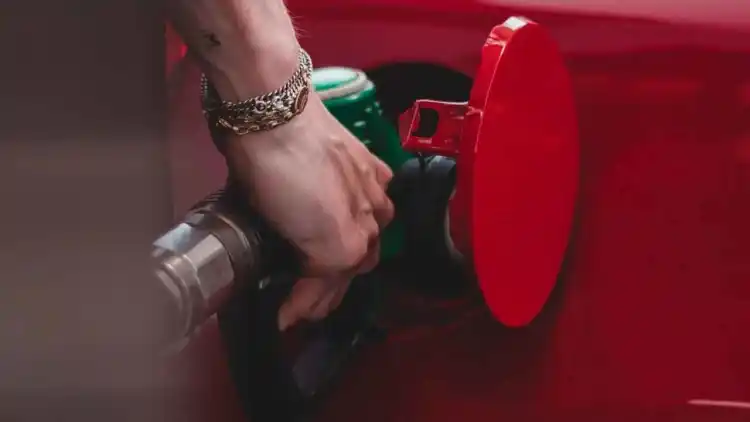- More Than Just Energy
- Low Fuel Level = Dirt Pulled Into The System
- Engine Starvation and Misfires
- Catalytic Converter Meltdown – The Most Costly Aftershock
- Long-Term Consequences
- “The Stop That Cost $700”
- Key Takeaways
- Parts at Risk When You Run Out of Gas
- The Bottom Line
How many times have you driven with your fuel gauge flirting dangerously close to “E”? Many drivers gamble on stretching a few extra miles before refueling, thinking it’s harmless. But running out of gas doesn’t just stall your car—it silently damages vital engine parts, from the fuel pump to the catalytic converter.
This article explains, step-by-step, what actually happens when your car runs dry and how it can lead to expensive repairs that could easily have been avoided with a timely stop at the station.

More Than Just Energy
Gasoline doesn’t only power your car—it cools and lubricates certain components.
When fuel runs dangerously low, the fuel pump, which transfers gasoline from the tank to the engine, starts sucking in air instead of liquid fuel.
This causes internal overheating of the pump, which relies on fuel flow for cooling.
The high temperature can damage electrical coils, seals, and bearings inside the pump.
Replacing a fuel pump typically costs around $390–$900, depending on your vehicle—an easily avoidable expense with regular refueling.
Low Fuel Level = Dirt Pulled Into The System
Older or frequently used cars often accumulate sludge and contaminants at the bottom of the tank. When you drive on “fumes,” the pump desperately tries to draw remaining fuel—and ends up pulling debris instead.
These impurities clog the fuel filter and restrict fuel flow to the injectors.
This results in sluggish acceleration, failed starts, or sudden engine sputters.
Over time, it causes injector corrosion and permanent damage to fine internal components.
Engine Starvation and Misfires
Modern engines are electronically managed to maintain a precise air-fuel ratio. When gasoline supply becomes insufficient:
Less fuel reaches the cylinders, upsetting the balance and causing misfires.
The engine starts shaking or accelerating unevenly; ignition timing gets erratic.
Severe misfires induce a phenomenon called engine knock, an audible metallic “ping” caused by untimed pressure waves colliding inside the cylinder.

Catalytic Converter Meltdown – The Most Costly Aftershock
The catalytic converter—responsible for cleaning exhaust gases—can become an unintended victim of empty-tank driving. Here’s how:
Misfires send unburned fuel into the exhaust.
Gasoline ignites inside the converter, causing temperatures to exceed 1,000°F (540°C).
This heat can melt the converter’s ceramic or precious metal core, turning it useless.
Replacement costs may exceed $2,000 depending on your model.
Long-Term Consequences
Driving frequently with a near-empty tank doesn’t just risk one repair—it compounds several forms of damage:
Continuous overheating shortens the lifespan of the fuel pump and injectors.
Increased wear on pistons and cylinder walls from engine knocking.
Fuel contamination can foul sensors and filters throughout the system.
Over time, overall engine performance declines, fuel efficiency drops, and repair costs skyrocket.
“The Stop That Cost $700”
One summer afternoon, Khalid ignored his low fuel light, convinced the next gas station was only a few miles away. The car stalled midway, forcing him to tow it to a mechanic. Diagnosis? A burnt-out fuel pump and blocked fuel filter.
The repair bill: $700—all because he tried saving five minutes.
Moral: ignoring the fuel warning light is a cheap decision that leads to an expensive lesson.
Key Takeaways
Never let your fuel level drop below a quarter tank.
Gasoline cools the system—without it, pumps overheat.
Low gas means incorrect air/fuel mixture, leading to misfires.
Misfires send raw fuel to the exhaust—overheating the catalytic converter.
Constantly driving on “E” reduces your car’s reliability and resale value.
Parts at Risk When You Run Out of Gas
The Bottom Line
Running out of gas isn’t a harmless inconvenience—it quietly destroys your car’s most vital systems. Treat your fuel gauge like a health monitor, not a challenge. Refueling before reaching a quarter-tank isn’t merely good practice—it’s a form of preventive maintenance that saves thousands in the long run.
So next time that amber fuel light blinks, consider it your engine’s “SOS”—and don’t ignore the call.






